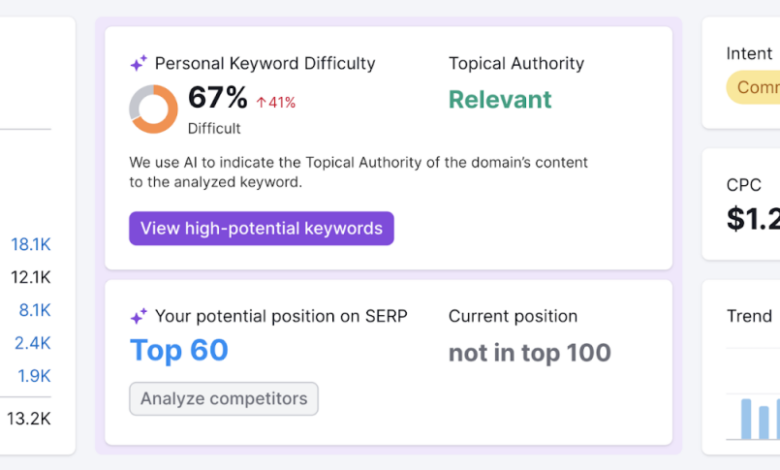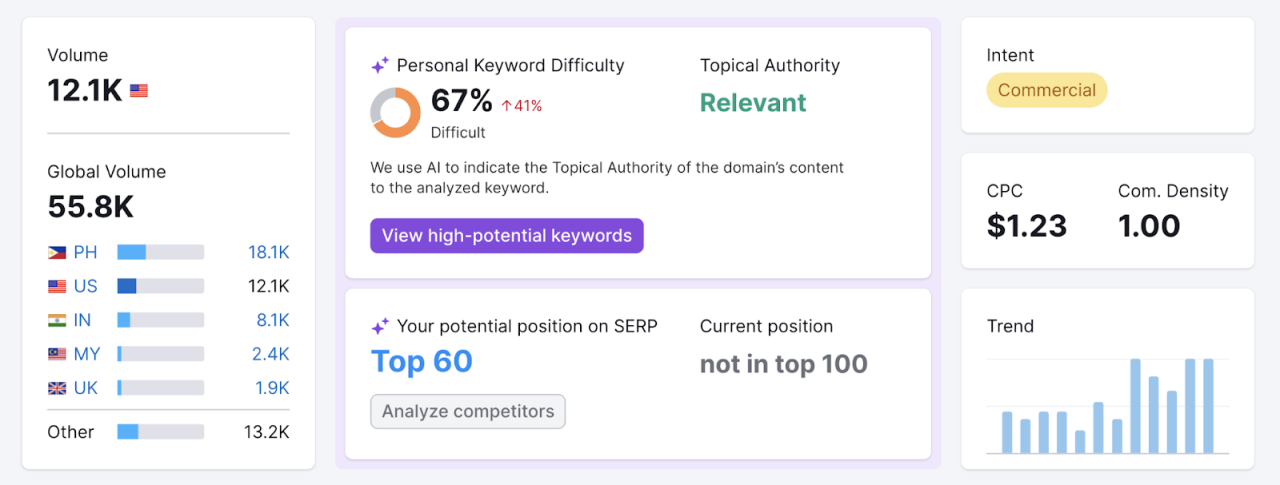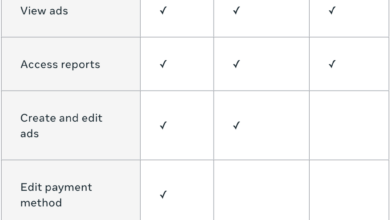
Mastering Search Terms for WordPress
Search terms are the gateway to your WordPress success. Understanding their types, variations, and trends is crucial for optimizing your site. This guide explores the complexities of search terms, from broad s to highly specific queries.
We’ll dissect various aspects, including the nuances of search intent, the power of combining terms, and the impact of context on their interpretation. We’ll also examine different data sources and how to leverage them for optimal results. Ultimately, mastering search terms empowers you to connect with your target audience effectively.
Search Term Types: Search Terms
Understanding the different types of search terms is crucial for effective and information retrieval. Search terms, the words or phrases users type into search engines, range from broad inquiries to highly specific requests. This understanding allows us to tailor our content and strategies to meet the needs of a diverse audience.Search terms can be categorized based on their level of specificity, which directly impacts the search volume and the intended audience.
This categorization helps in prioritizing content creation and optimization efforts. Knowing the context of a search term is critical in determining its type, as a single term can represent different levels of specificity depending on the user’s intent.
Classifying Search Terms
Different types of search terms cater to various user needs and intents. Understanding the specificity levels allows content creators to tailor their content and strategies. The classification below distinguishes between broad, mid-range, and specific search terms.
| Term Type | Description | Examples |
|---|---|---|
| Broad | These terms are very general and cover a wide range of topics. They often have high search volume but low conversion rates. | “coffee,” “travel,” “cars,” “technology” |
| Mid-range | These terms are more specific than broad terms but still encompass a range of s. They typically have a moderate search volume and can represent a good balance between reach and focus. | “best coffee beans,” “budget-friendly travel destinations,” “electric cars,” “artificial intelligence applications” |
| Specific | These terms are highly targeted and often used when users have a very clear idea of what they want. They have low search volume but usually high conversion rates. | “best Arabica coffee beans for espresso,” “cheap flights to Bali in October,” “Tesla Model S performance,” “AI-powered medical diagnosis software” |
Contextual Influence on Classification
The context of a search term is vital in determining its appropriate classification. A single term, like “shoes,” could be broad if used by someone searching for general information about footwear, or specific if used by someone looking for “running shoes for men size 10.”The search engine’s algorithm considers various factors, including the user’s search history, location, and other search terms used in the session, to interpret the user’s intent.
For example, someone searching for “best Italian restaurants” in New York City will likely have a different intent than someone searching for “best Italian restaurants near me.” The context significantly influences the level of specificity and, therefore, the appropriate classification of the search term.
Search Term Variations
Understanding the diverse ways people search for information is crucial for optimizing search engine results. Different phrasing, synonyms, and related terms can all lead to the same underlying search intent. This understanding allows for a more comprehensive approach to capturing potential users and refining search strategies.Search terms aren’t always straightforward. People might use different words, phrases, or even entirely different sentence structures to express the same underlying need or query.
Recognizing these variations is essential for creating a search strategy that covers a wider range of user input.
Knowing the right search terms is key for social media success. But let’s be honest, managing multiple platforms can be a real time-suck. That’s where 4 top social media scheduling tools to save time come in handy. They help you plan and schedule posts across various platforms, freeing up your precious time to focus on crafting engaging content and refining those crucial search terms for optimal results.
Identifying Synonyms and Related Terms
Understanding synonyms and related terms allows us to capture the various ways people express the same concept. For example, “coffee maker” and “espresso machine” are related terms for different types of coffee brewing devices. Synonyms can help account for user preferences and variations in language. Expanding the range of terms used for searches allows for a more complete coverage of the target audience.
Exploring Alternative Phrasings
Alternative phrasings encompass different ways of expressing a concept. Instead of just “best running shoes,” a user might search for “lightweight running shoes for marathon training” or “comfortable running shoes for everyday use.” These variations reflect different user needs and priorities.
Comparing Effectiveness of Variations
The effectiveness of different search term variations depends on factors like the target audience, the specific search engine, and the overall search strategy. Analyzing search volume and click-through rates for different variations can help assess their potential impact. This data-driven approach ensures that the most effective terms are prioritized in the search strategy.
Table of Search Term Variations
The table below demonstrates various search term variations for the topic “best budget-friendly laptops for students.” It showcases how different phrasing and related terms can yield similar results, allowing for more comprehensive search coverage.
| Search Term Variation | Description | Potential User Intent |
|---|---|---|
| Best budget laptops for students | Simple, direct phrasing | Looking for affordable laptops suitable for students |
| Affordable laptops for college students | Focuses on affordability and student use | Similar intent to the above, emphasizing the target audience |
| Cheap laptops for university students | Emphasizes low cost | Students prioritizing price over other features |
| Student laptops under $500 | Specific price range | Looking for laptops within a particular budget |
| Best value laptops for college | Prioritizes value and performance | Interested in laptops offering a good balance of price and features |
| Laptop deals for students | Focuses on sales and discounts | Looking for discounted laptop options |
Search Term Trends
Search terms are constantly evolving, reflecting shifts in societal interests, technological advancements, and cultural trends. Understanding these trends is crucial for businesses and marketers to adapt their strategies and stay relevant in the digital landscape. This evolution isn’t random; patterns emerge and disappear, providing insights into the pulse of the public’s online inquiries.Search term evolution is not just about what people search for, but also how they search for it.
The increasing use of long-tail s, voice search, and visual search are all part of this dynamic shift. These trends directly impact search engine optimization () strategies, necessitating continuous adaptation to maintain visibility and effectiveness.
Evolution of Search Terms Over Time
The landscape of search terms has been significantly impacted by the rise of social media, the proliferation of mobile devices, and the increasing accessibility of information. Early search terms were often short and focused on specific facts or information. As technology advanced and information became more readily available, search queries became more nuanced and detailed.
Factors Influencing Search Term Emergence and Decline
Several factors play a role in the emergence and decline of specific search terms. Significant events, like major news stories or natural disasters, often lead to a surge in searches related to those events. Cultural shifts and trends, such as the rise of a particular social media platform or a new fashion style, can also significantly impact search volume.
Technological advancements, like the launch of a new product or the introduction of a new feature on a website, often generate a wave of related searches. Conversely, the obsolescence of technologies or the decline in popularity of certain products can lead to a decrease in the frequency of searches.
Emerging Trends in Search Terms
Several emerging trends are shaping the future of search. The rise of voice search is impacting strategies, requiring marketers to focus on conversational and question-based queries. Visual search is another emerging trend, with users increasingly searching using images instead of text. Furthermore, the integration of AI and machine learning into search engines is leading to more personalized and relevant search results.
This personalized approach has a strong potential impact on how users find information. The demand for niche information and highly specific searches is on the rise, demanding targeted strategies for content creation and optimization.
Visual Representation of Search Term Trends
| Search Term | 2020 | 2021 | 2022 | 2023 |
|---|---|---|---|---|
| “Electric Car” | 10,000 | 15,000 | 22,000 | 28,000 |
| “Virtual Reality Headset” | 5,000 | 8,000 | 12,000 | 15,000 |
| “Sustainable Fashion” | 2,000 | 3,500 | 6,000 | 9,000 |
| “Cryptocurrency Investment” | 18,000 | 25,000 | 15,000 | 20,000 |
Note: Values in the table represent hypothetical search volume (in thousands). The data reflects a general trend and does not represent any specific search engine’s data.
Search Term Relevance

Picking the right search terms is crucial for effective . Irrelevant terms waste your effort and resources, driving traffic that doesn’t convert. A deep understanding of relevance ensures your content reaches the intended audience and achieves your goals. This section delves into the significance of search term relevance and how to assess it.Relevance in search term selection directly impacts your marketing strategy.
When search terms are highly relevant, your content is more likely to attract the right audience, leading to increased engagement, conversions, and brand visibility. Conversely, irrelevant search terms attract unqualified traffic, ultimately wasting resources.
Criteria for Evaluating Search Term Relevance
Identifying relevant search terms hinges on understanding the user’s intent. Several criteria are used to evaluate search term relevance. These include:
- Match to User Intent: A relevant search term directly aligns with the user’s underlying goal when searching. For example, if a user searches “best Italian restaurants near me,” their intent is to find restaurants. A search term like “Italian cuisine history” wouldn’t be relevant because it doesn’t match the user’s goal of finding a restaurant.
- Contextual Alignment: The search term should align with the specific context of your content. If your content is about vegan recipes, search terms like “vegetarian lasagna” might not be relevant, even though they are semantically related. The term needs to be very specific to vegan cuisine.
- Search Volume and Competition: While relevance is paramount, consider the search volume and competition for your chosen search terms. A highly relevant but low-volume search term won’t drive significant traffic. Likewise, a high-volume, highly competitive term might be difficult to rank for.
Examples of Relevant and Irrelevant Search Terms
Understanding relevance requires concrete examples. Consider a blog post about “sustainable gardening practices.”
Picking the right search terms is crucial for online visibility. But if you’re not careful, your website could be driving customers away. Understanding how to use search terms effectively, and how to craft a website that answers user questions, is vital to attracting the right audience. For a deeper dive into why you might be scaring customers away online, check out this great resource: why youre scaring customers away online.
Ultimately, mastering search terms and online presentation is key to reaching your target audience.
- Highly Relevant: “organic gardening techniques,” “composting for beginners,” “water conservation in the garden,” “best native plants for a small garden.” These terms directly relate to the content’s focus on sustainable practices and align with the user’s intent to learn about sustainable gardening.
- Irrelevant: “best dog breeds for apartments,” “DIY pizza recipes,” “latest fashion trends.” These terms are unrelated to the central theme of sustainable gardening, thus diminishing the relevance of the post.
Determining Relevance to User Intent
Pinpointing a search term’s relevance to a specific user’s intent requires careful analysis. Understanding the user’s motivation behind the search is key.
- Analyzing Search Queries: Tools like Google Planner provide insight into search queries related to your topic. This helps identify terms that resonate with user intent.
- Considering User Personas: Defining your target audience allows you to predict their search behavior and tailor your search terms accordingly. For example, a user interested in “organic gardening” likely wants information on methods and benefits.
- Conducting User Research: Surveys and interviews with your target audience can provide valuable insights into their search behavior and preferred terminology.
Search Term Structure
Crafting effective search queries goes beyond simply typing in s. The way you arrange those words significantly impacts the results you receive. Understanding search term structure is crucial for navigating the vast expanse of online information and finding precisely what you need. Optimizing your search terms allows you to target your search and get the most relevant results.Effective search terms aren’t just a list of words; they’re carefully constructed phrases that mirror the specific information you seek.
This structure is key to narrowing down the results and preventing a flood of irrelevant information. A well-structured search query is like a precise map, guiding you straight to the destination.
Grammatical Structure of Effective Search Terms
The grammatical structure of your search query directly influences the types of results you retrieve. Using precise and concise language, including appropriate punctuation, and employing the right grammatical structure, yields the most relevant results. For instance, a query like “best Italian restaurants near me” is more likely to return localized results than “best Italian restaurants”.
Arrangement of Words in a Search Query, Search terms
The order in which you arrange words in a search query can significantly impact the results. Search engines analyze the relationships between words to determine relevance. “Best pizza near me” will likely return different results than “near me best pizza”. In some cases, the order might not matter much, but in others, it can drastically change the outcome.
Understanding search terms is crucial for any online presence. But optimizing for personal assistants is a whole new ballgame. You need to think beyond typical keywords and consider how personal assistants like Siri and Alexa might phrase their requests. For a deep dive into this exciting new frontier of SEO, check out this insightful guide on how to optimize for personal assistants the new frontier of seo.
Ultimately, mastering these unique search patterns is key to ensuring your content reaches the right audience.
Common Structural Patterns
Common patterns in successful search queries often involve the use of:
- s: Core words directly related to the topic.
- Modifiers: Words that refine the search, such as adjectives, adverbs, and prepositions. Examples include “best,” “cheap,” “new,” or “nearby.”
- Location qualifiers: Adding location information to narrow down results, like “London,” “near me,” or “New York City.”
- Specific terms: Using precise terminology can help to distinguish the intended subject, e.g., “Python programming language” vs. “Python.”
Tips for Improving Search Term Structure
- Use specific s: Avoid vague terms and opt for precise s that reflect the exact information you need. Instead of “dog food,” try “best dog food for small breeds.”
- Incorporate modifiers: Refine your search by adding adjectives, adverbs, and prepositions. “Best restaurants” versus “affordable best restaurants.”
- Utilize quotation marks: Use quotation marks around phrases to search for exact matches. For example, “organic dog food” will return results containing that exact phrase.
- Employ Boolean operators: Use “AND,” “OR,” and “NOT” to refine search results and specify relationships between s. “cat food AND organic” will return results containing both terms.
- Test different structures: Experiment with various arrangements of s and modifiers to see which structures yield the most relevant results.
- Consider synonyms and related terms: Use alternative words and phrases that have similar meanings to broaden your search. If you search for “Italian cuisine,” consider also searching for “Italian food,” “Italian restaurants,” etc.
Search Term Intent
Understanding the underlying purpose behind a user’s search query is crucial for crafting effective strategies and delivering relevant results. Knowing what a user wants to achieve through their search helps tailor content and optimize website structure for a more satisfactory user experience. This insight allows businesses to align their offerings with the specific needs and desires expressed in the search terms.Interpreting the intent behind search terms goes beyond simply recognizing s.
It involves deciphering the user’s goal, whether they’re seeking information, looking to navigate to a specific page, or intending to make a purchase. Identifying these distinct intents empowers search engine optimization efforts to effectively guide users toward the most appropriate and valuable resources.
Types of Search Intent
Search intents fall into several categories, each with unique characteristics. Recognizing these categories allows us to understand the user’s motivation and optimize accordingly. The most common types are:
- Informational Intent: Users seeking knowledge or information about a specific topic. They are often looking for answers to questions, explanations, or details about a subject. Examples include “how to bake a cake,” “best coffee beans,” or “history of the Roman Empire.” These searches often involve broad s and less specific terms.
- Navigational Intent: Users trying to reach a particular website or specific page. They already know what they want to find and are using the search engine as a tool to get there. Examples include “Facebook,” “Amazon,” or “Google Maps.” These searches are usually focused on very specific, well-known websites or pages.
- Transactional Intent: Users looking to complete a purchase or action, such as making a reservation, signing up for a service, or buying a product. They are ready to take the next step in the purchasing process. Examples include “buy iPhone 14,” “book a flight to Paris,” or “subscribe to Netflix.” These searches frequently include specific product names, brands, or action verbs.
Methods for Identifying Search Intent
Several methods can be used to determine the intent behind a search term. Analyzing the search terms themselves, along with the context surrounding the search, can provide valuable insights into the user’s objective.
- Analysis: Examining the s used in the search query can offer clues about the user’s intent. Broad s generally indicate informational intent, while specific product names or action verbs point toward transactional intent. Analyzing the presence of specific terms, like “best,” “review,” or “how to,” can also provide additional context.
- Search History and User Behavior: Studying past search history and user behavior patterns can help determine the user’s typical search intents. For example, someone consistently searching for “best restaurants” likely has an informational intent. Understanding user behavior on a website can also reveal patterns in their actions, suggesting whether they are looking for information, navigation, or making a purchase.
- Contextual Clues: Understanding the broader context surrounding the search is vital. For example, a search for “flights to London” in the context of a travel planning website likely has a transactional intent. The user’s location, device, and time of day can all be valuable contextual clues.
Examples of Search Intent Analysis
Let’s consider a few examples to illustrate how these methods work.
| Search Term | Likely Intent | Rationale |
|---|---|---|
| “best running shoes for marathon” | Informational | The user is seeking recommendations and comparisons, not necessarily ready to buy. |
| “nike air max 90” | Navigational or transactional | The user is likely familiar with the product and brand and may be looking to find the product on the brand’s website or to purchase it. |
| “order pizza online” | Transactional | The user is explicitly indicating an intention to place an order. |
Search Term Combinations
Combining search terms is a powerful technique for refining your search results and uncovering more specific information. Instead of searching for a broad term like “marketing strategies,” you can use more precise combinations like “digital marketing strategies for small businesses.” This approach significantly reduces the noise and returns results more relevant to your needs. This focused approach improves efficiency and helps you quickly identify the most useful data for your particular research goal.
Strategies for Combining Search Terms
Combining search terms effectively requires careful consideration of the relationships between the terms. This involves understanding the nuances of the search terms and how they relate to each other. A well-structured search query, composed of strategically chosen s, can significantly narrow down results, ensuring you retrieve the most pertinent information.
Effective Combination Techniques
Careful selection of search terms and their combination is key to effective searching. This involves using conjunctions (AND, OR, NOT) to refine results. “AND” combines terms, ensuring both are present in the results; “OR” allows for either term to appear; and “NOT” excludes specific terms from the results. Consider synonyms and related terms to expand your search scope while still maintaining relevance.
For instance, searching for “online marketing strategies AND social media” will yield results that contain both terms.
Illustrative Examples of Search Term Combinations
The effectiveness of combining search terms can be seen in the following table:
| Search Term 1 | Search Term 2 | Combined Search Term | Potential Results (Example) | Effectiveness Rating (1-5) |
|---|---|---|---|---|
| Digital Marketing | Strategies | Digital Marketing Strategies | Comprehensive guides on digital marketing techniques | 4 |
| Social Media | Marketing Campaigns | Social Media Marketing Campaigns | Case studies and examples of social media marketing | 5 |
| Techniques | Techniques for E-commerce | Specific strategies for optimizing e-commerce websites | 4 | |
| Content Marketing | Blog Posts | Content Marketing Blog Posts for Lead Generation | Strategies for creating blog content to attract leads | 4 |
| Email Marketing | Automation | Email Marketing Automation Tools | Reviews and comparisons of email marketing automation software | 3 |
Note: Effectiveness ratings are subjective and depend on the specific search engine and user intent. A rating of 5 indicates very high relevance and accuracy.
Search Term Data Sources
Uncovering the secrets behind search term behavior requires access to reliable data sources. Understanding the frequency, popularity, and trends of search terms is crucial for effective strategies, market research, and content creation. This section delves into the diverse range of data sources available and their respective strengths and limitations.
Primary Data Sources
Various sources provide direct insights into search term data. These are often considered the most accurate and reliable because they capture the actual search activity.
- Search Engine Data (Proprietary): Search engines like Google, Bing, and DuckDuckGo possess vast troves of search data. They collect and analyze search queries, often in aggregate form. While this data is highly valuable, direct access is typically restricted to those with specific partnerships or access agreements. Examples include Google Trends and Google Analytics for those with accounts. The accuracy is exceptionally high, as this is based on real-world user queries.
However, the data may be proprietary and not publicly available.
- Web Analytics Tools: Tools like Google Analytics provide insights into the search terms users employ to reach a specific website. This offers a targeted view of search terms relevant to a particular business or website. The accuracy is high when focused on a specific domain. The data is highly relevant to specific websites and campaigns. However, the data is limited to the sites the tools are installed on.
Secondary Data Sources
These sources rely on data compiled from other sources, which can influence the accuracy and reliability of the analysis.
- Research Tools: Third-party research tools often aggregate data from various sources to offer insights into search volume, competition, and related s. They provide valuable overviews, but the accuracy can vary depending on the data aggregation methods employed by the tool. Examples include SEMrush, Ahrefs, and Moz Explorer. These tools provide a wider scope compared to proprietary data but are still subject to aggregation and filtering methods.
The accuracy depends on the quality of data collected and the algorithms used by the tool.
- Social Media Monitoring Tools: Tools designed to track social media conversations can reveal popular search terms in specific communities or topics. The data reveals trends in online discussions, but the interpretation must consider the specific social media context and the biases inherent in the platforms themselves. These tools, like Brandwatch and Talkwalker, are valuable for identifying trending topics but may not capture the full breadth of search activity.
The accuracy is subject to the specific nature of social media and the interpretation of the gathered data.
Data Accuracy and Reliability
The accuracy and reliability of data sources vary significantly. It’s essential to consider the source’s methodology, data collection methods, and the scope of the data when evaluating the results.
- Data Collection Methodology: Understanding how data is collected and aggregated is crucial. Different methods will produce different results. For example, a tool focusing on a specific region may produce different results than a tool focusing on global trends. The accuracy is determined by the methodology and how representative the sample is.
- Data Scope: The scope of the data source impacts the reliability of the analysis. A tool that covers a narrow topic may be highly accurate for that niche, but may not reflect broader trends. The accuracy is limited by the scope of the data source and its focus.
Search Term Context
Understanding search terms goes beyond simply identifying the s used. Context is crucial in interpreting the true meaning behind a search query. This context provides a deeper understanding of the user’s intent and allows for more accurate and relevant search results. Without considering context, search engines might miss the nuances in a user’s request, leading to frustrating results.Contextual information significantly affects the interpretation of search terms.
A search term like “best coffee” could mean different things depending on the user’s location, the time of day, or their prior search history. For instance, a user in Seattle might be looking for a local coffee shop, while a user in New York City might be searching for a specific coffee bean type. Understanding these subtle differences is essential for providing tailored results.
Influence of Location on Search Term Interpretation
Location significantly impacts search term meaning. A search for “restaurants near me” will yield vastly different results for a user in a bustling city center compared to someone in a rural area. The search engine needs to understand the user’s location to provide appropriate recommendations. The radius of the “near me” search also varies based on location, making accurate location data essential for contextual interpretation.
Impact of Time on Search Term Interpretation
Time of year, day, or even time of day can drastically influence search intent. A search for “pumpkin spice lattes” in September is likely different from a search for the same term in May. Similarly, a search for “best deals on flights” performed on a Tuesday afternoon might differ from the same search conducted on a Friday evening.
Effect of User Profile on Search Term Interpretation
User profile data, such as browsing history, past searches, and even purchase history, can provide valuable insights into the user’s needs and preferences. A user consistently searching for “organic gardening tips” might have a strong interest in sustainable practices. A search engine using this information can deliver results tailored to the user’s interests, rather than just a general list of results.
Impact of Context on Search Term Interpretation
| Search Term | Location | Time | User Profile | Interpretation |
|---|---|---|---|---|
| “flights to London” | New York | June | Frequent traveler, interested in business travel | Looking for affordable business-class flights to London in June, likely for a conference. |
| “best Italian restaurants” | Miami | Valentine’s Day | Couple, frequently dining out | Searching for a romantic Italian restaurant for Valentine’s Day dinner in Miami. |
| “running shoes” | San Francisco | Morning | Fitness enthusiast, avid runner | Looking for running shoes suitable for a morning run in San Francisco, possibly focusing on trail running. |
Final Wrap-Up

In conclusion, understanding search terms is paramount for visibility and user engagement. By carefully considering the types, variations, trends, and context surrounding your target s, you can significantly enhance your WordPress site’s performance. From research to strategic combinations, this comprehensive guide equips you with the tools to optimize your approach and unlock a world of possibilities.





